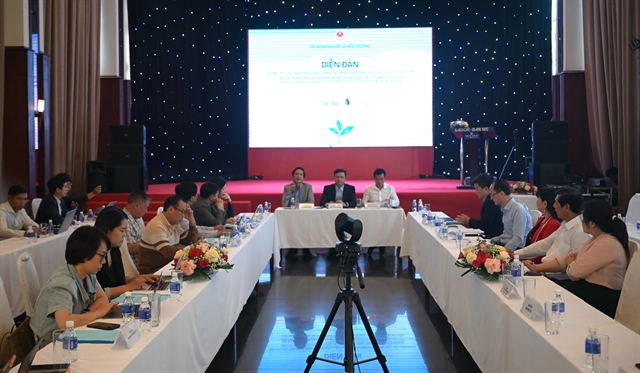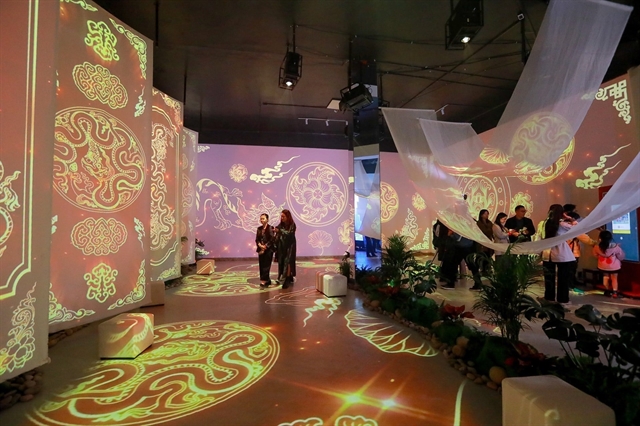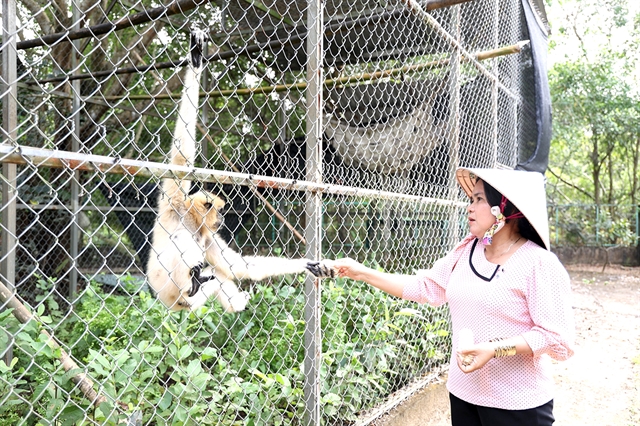 Environment
Environment

 |
| Néang Ma La and a yellow-cheeked gibbon at U Minh Thượng National Park's Centre for Ecotourism, Environmental Education and Wildlife Rescue. — VNA/VNS Photo Lê Sen |
Lê Sen
KIÊN GIANG — For nearly a decade, Néang Ma La, a Khmer woman, has been working tirelessly alongside her colleagues at U Minh Thượng National Park in the southern Kiên Giang Province to care for wildlife saved from illegal trafficking.
Graduating from HCM City University of Agriculture and Forestry as a forest engineer, Néang Ma La met her husband, a local staff member at U Minh Thượng National Park in 2017, and has been working within wildlife since.
She now works at the park’s four-hectare Centre for Ecotourism, Environmental Education and Wildlife Rescue, which is fostering 202 animals of 36 wild species for conservation, scientific research and environmental education.
Néang Ma La and her colleagues at the centre provide care and rehabilitation for rare animals rescued from illegal trafficking and transportation, and eventually release them back to the wild.
The career switch was not without challenges, but Néang Ma La has been grateful for support from her colleagues since her first days as a wildlife rescuer.
Their stories of previous missions have helped her equip herself with the knowledge to fulfil her tasks, she said.
To Néang Ma La, wild animals are special, and conservationists need to understand each species’ habits and characteristics in order to care for them with customised routines and diets.
Their daily tasks include buying food and feeding the animals, cleaning their enclosures and nursing injured animals back to health.
The job takes more than just knowledge, she added, with patience being one of the most important qualities.
The centre once took in a young hairy-nosed otter in 2019, which was not able to consume fish at the time. To save the rare animal, she bought milk and spoon-fed the pup every meal.
A “rapid response team” was also established at the centre, which is always ready to be deployed when receiving a call from local people or authorities for wildlife rescue.
In 2023, the centre rescued and transferred for conservation 21 species, with 127 individuals in total.
It also helped return 179 animals of 12 different species back to the wild, achieving a rescue rate of 93.4 per cent.
Meanwhile, three rare wildlife species, including wildcats, Asian palm civets and Lyle’s flying foxes were successfully bred at the centre.
For Néang Ma La, each animal released never fails to impress her. While the job is tough, it was the most amazing moment to see the animals return to the wilderness - their true home, she said.
The affection and responsibilities of the centre’s staff towards wildlife have also raised people’s awareness of conservation issues.
Néang Ma La hopes that people can understand the importance of wildlife and refrain from consuming or exploiting the animals, keeping them in captivity or engaging in illegal wildlife trade.
"It is the least we can do to help protect wild animals," she said. — VNS